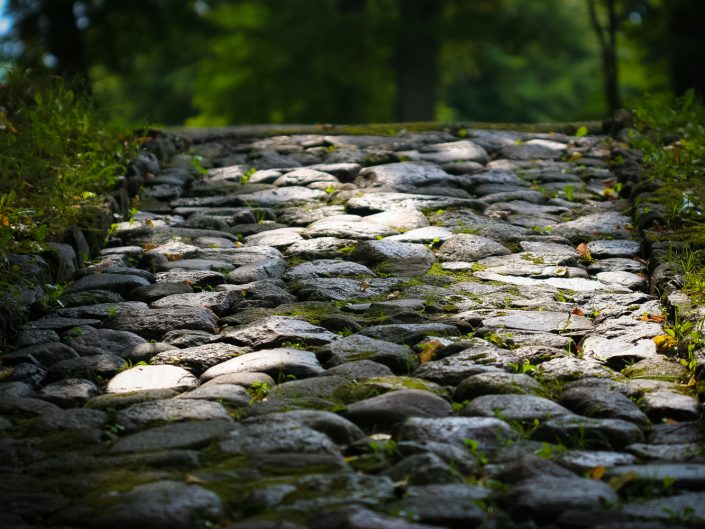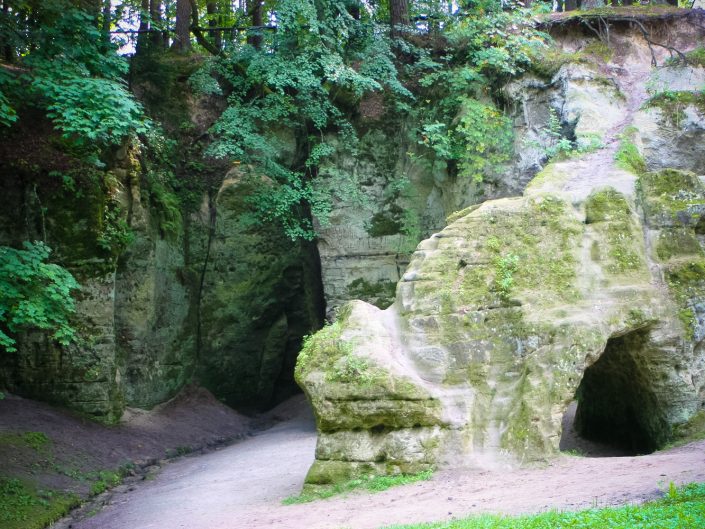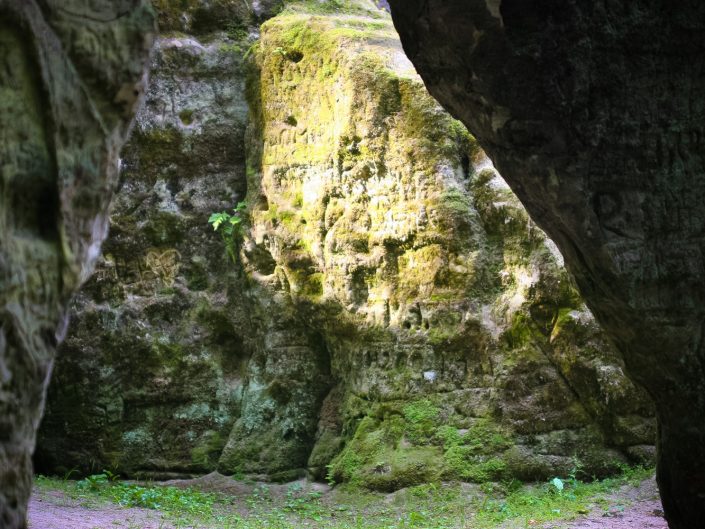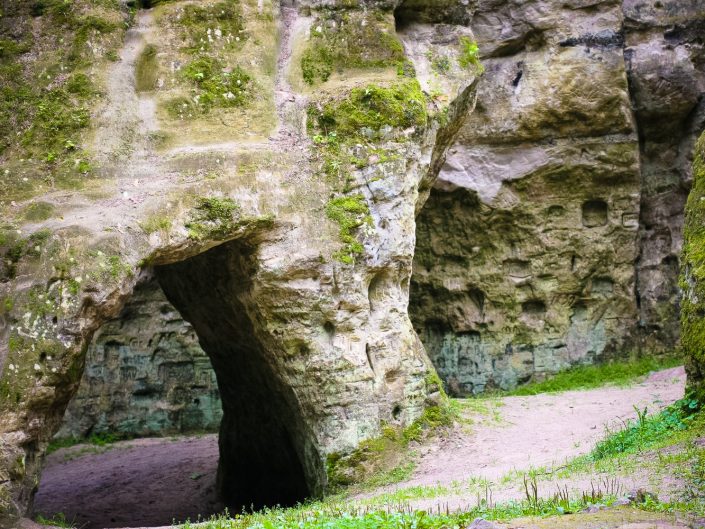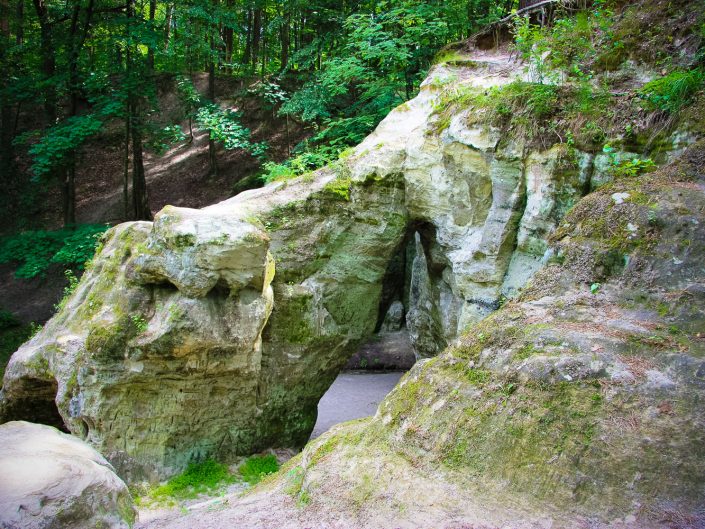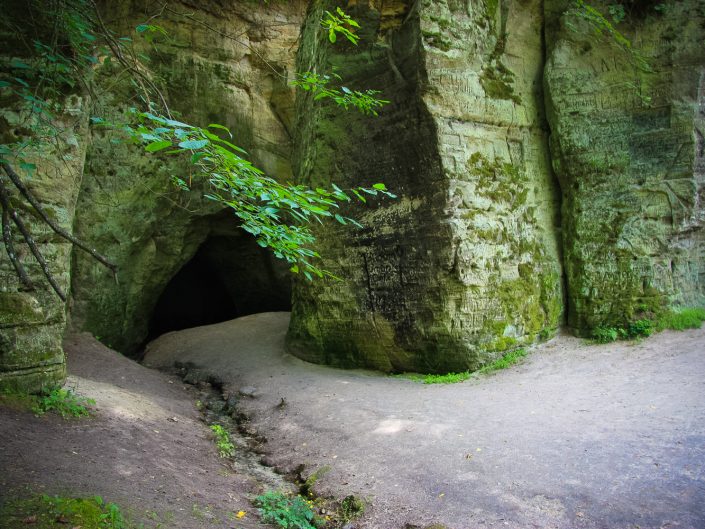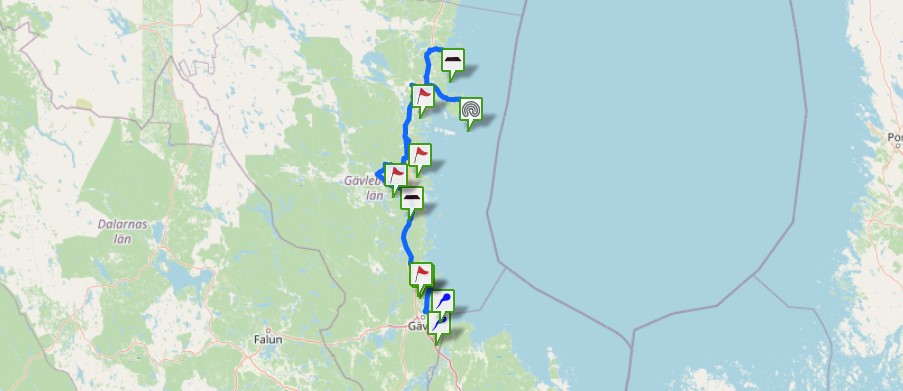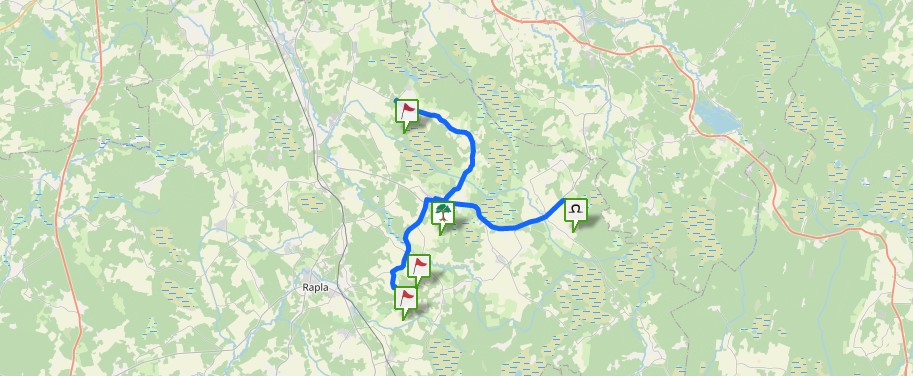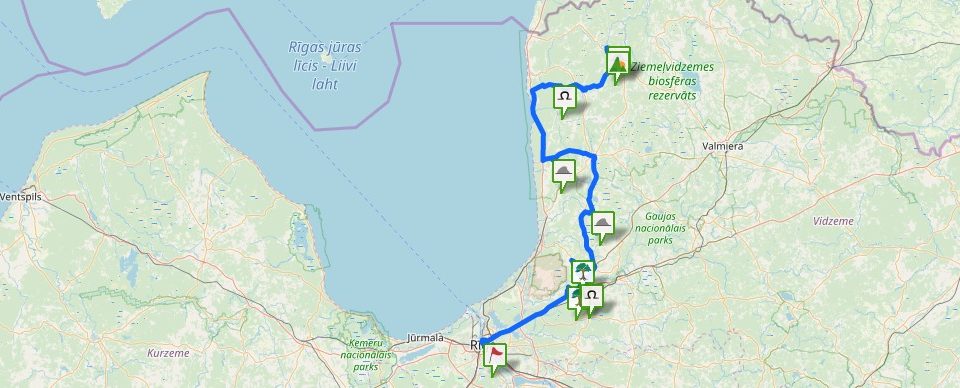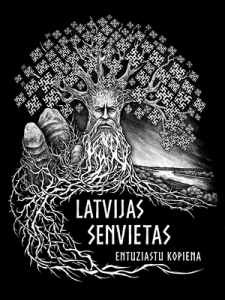State archaeological heritage (State Inspection for Heritage Protection, No 484). It is a geological and geomorphological object under protection. Located within the territory of the Gauja National Park, an object of Natura2000. One of the most peculiar devonian sandstones in Latvia. It is also called the Devil’s Kiln (Velna ceplis), Devil’s Oven (Velna krāsns), Devil’s Cave, Liepmuiža’s Cave, one of the oldest tourism objects in Latvia. The main Ellīte cave is 1 m long, up to 5 m wide and 4 m heig. The total length of the cave is 23 m. A spring flows out of it. There is an opinion that the cave is 7000 years old (National Library of Latvia, 2012). After collapse of the Sietiņiezis Archway, the arcade of the Large Ellīte has remained the only natural sandstone formation of such a form in Latvia. The cave together with the spring are an important sacred site, the object has been very popular since ancient times (Latvian Tourism Development Agency, 2012). The cave was mentioned for the first time in 1791. In the 20s of the 20th century, people were taking sand in carts from the cave for household needs, thus destroying the former looks of the cave. In the publication “Mājas Viesis” of January 13, 1864, there was news published that the cave was visited by people from Estonia who found there inscriptions dating back as far as 1500 (www.alas.lv, 2009). Nearby is the Lodes clay-pits, Little Ellīte, Līči-Laņģi Cliffs, Bezdibenis Spring and the Large Cave, Grīviņas Mill, Grīviņas Spring, Gāršas Ancient Burial Ground.
“In the Liepa Parish the Ellīte used to be the Devil’s dwelling. You could see there people with rooster’s, cow’s and horse’s legs. They also say that there used to live plunderers who frightened people in various ways – with horns, large ears and otherwise by undressing so that people would not go there. In the Chambers plunderers used to live.” (S. Laime, 2009) “At the Liepa manor house near Cēsis there is a large cave called the Devil’s Kiln. And in that cave devils lived. Devils dressed up as humans and approached travellers, bought cattle, linen and other things from them, everything they were taking to the town. Devils paid good money. But as soon as those people came home with the money given by devils, the money turned into coal.” (Laime, 2009)
